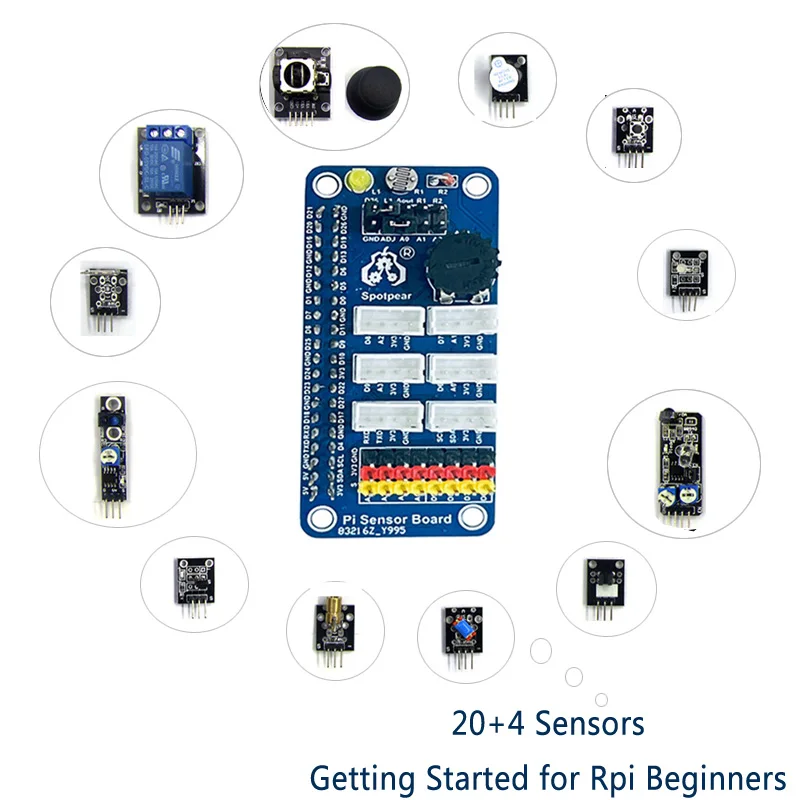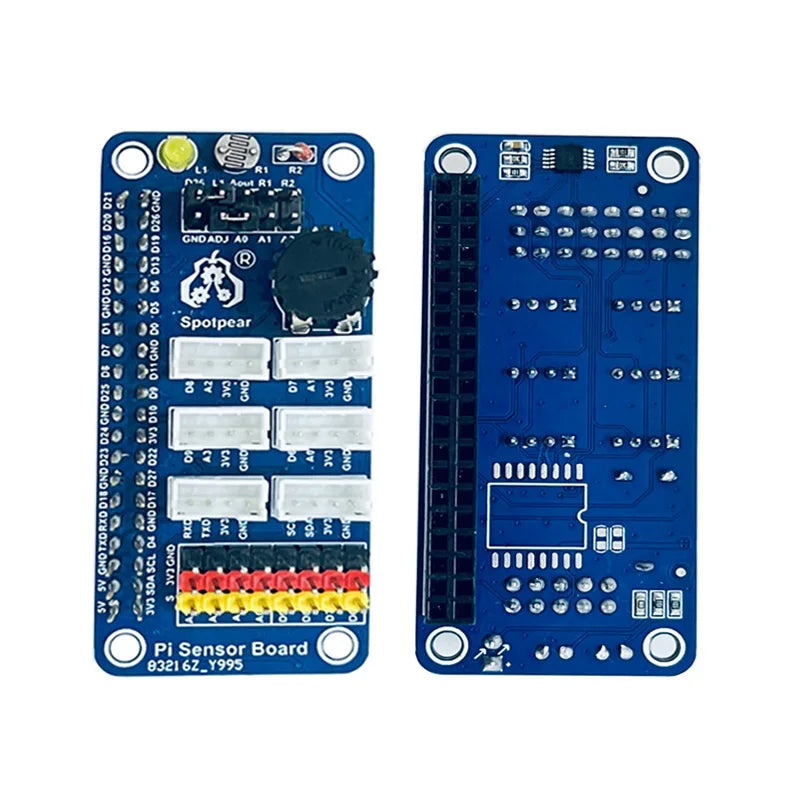Lonten Tech
Custom Raspberry Pi Zero 2W or 4B or Pico Starter kit Board AD Sensor expansion board +20 Modules Manufacturer
Custom Raspberry Pi Zero 2W or 4B or Pico Starter kit Board AD Sensor expansion board +20 Modules Manufacturer
Couldn't load pickup availability
Pi4-2GB Introduction

Raspberry Pi 4 Model B, the completely upgraded, re-engineered model of the Pi family. It has more powerful processor, faster networking, supports dual 4K output, and provides different choice of RAM.
- BCM2711B0 (ARM Cortex-A72)
-
64-bit 1.5GHz quad-core
-
- Choice of RAM
-
PI4B-1GB: 1GB
-
PI4B-2GB: 2GB
-
PI4B-4GB: 4GB
-
-
Gigabit Ethernet
-
802.11ac 2.4GHz/5GHz dual-band NIC
-
BT 5.0, BLE
-
USB 3.0 x 2, USB 2.0 x 2
-
micro HDM x 2 (supports 4Kp60)
-
PoE header (supports PoE HAT)
-
MicroSD slot
-
3.5 mm audio jack
-
40PIN GPIO header
-
CSI camera interface
-
DSI display interface
-
USB Type C power supply (5V/3A or above)
PCF8591 Introduction
-
The PCF8591 is a single-supply, low-power 8-bit CMOS data acquisition device with 4 analog inputs, one output, and a serial I2C bus interface.
-
Three address pins, A0, A1, and A2, are used to program hardware addresses, allowing up to 8 devices to be connected to the I2C bus without additional hardware.
ADS1115 Introduction
-
The ADS1115 device is a precision, low power, 16-bit, I2C compatible analog-to-digital converter ADC that integrates a low drift voltage reference and oscillator.
-
The ADS1115 performs conversions at data rates up to 860 samples per second (SPS).
Comparison of PCF8591 & ADS1115

Pi Sensor Board Interface Introduction
(Onboard photosensitive/thermal/LED/adjustable resistance 4 sensors)

1.Thermistor 5.Adjustable knob resistance 9.Sensor interface A
2.Photoresistor 6.Sensor A/D interface 10.Raspberry Pi UART
3.LED 7.Raspberry Pi I2C 11.20x2 Raspberry Pi interface
4.Onboard jumper selection 8.Sensor interface D 12.ADS1115 / PCF8591 Options
This product is an expansion board tailored for Raspberry Pi. It is equipped with common input and output modules and sensor circuits, and LED lights flash. It can be equipped with various sensor circuits on the expansion board for experiments, which is easy to use.



Program screenshot


Share












